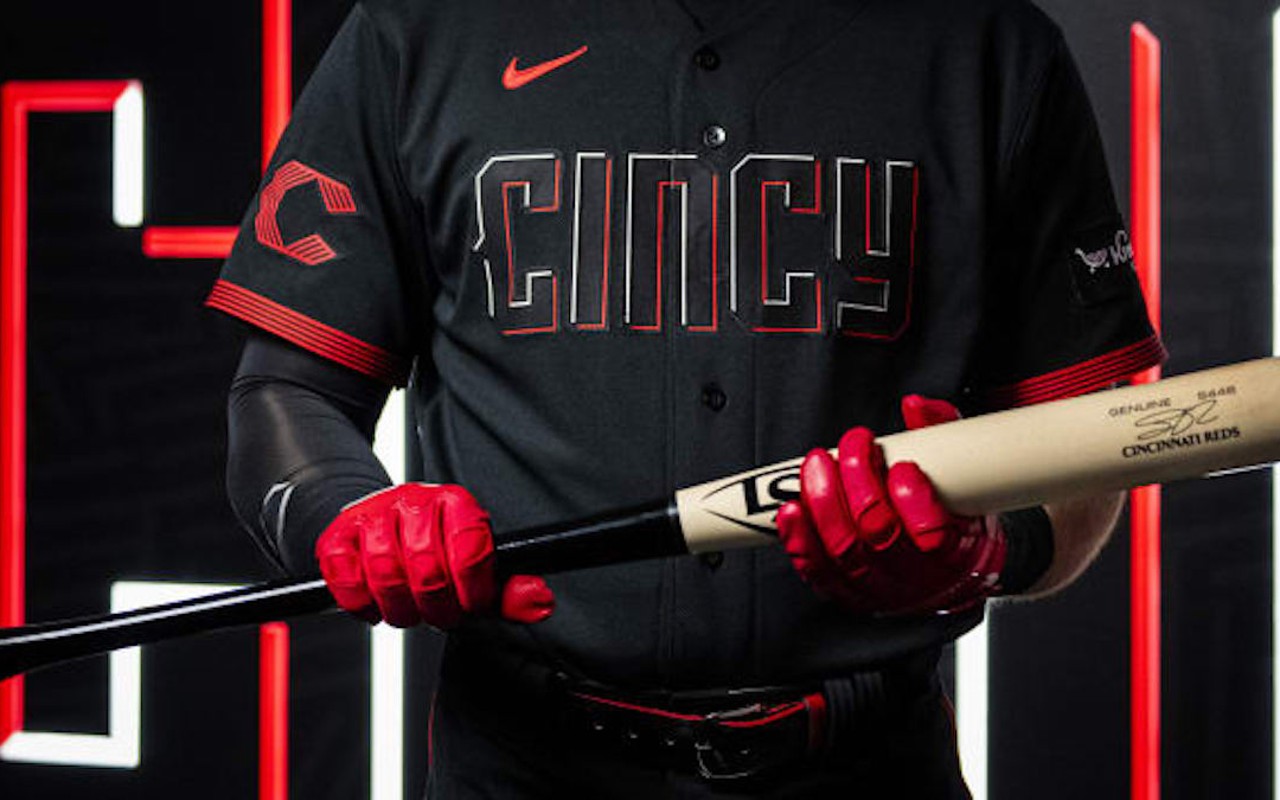
It can be done. Small-market baseball can work, this despite the enormous economic disparities of the least level playing field in professional sports. While the Reds were falling to last place amid a weekend sweep by the New York Yankees, the two best records in the game belonged to two of the three smallest payrolls.
The startling success the Tampa Bay Rays have been able to sustain is not easily replicated. The current competence of the Baltimore Orioles is at least partially due to the franchise’s long-running futility and the high draft choices that have resulted.
Yet there are valuable lessons for the Home Team in these small-market success stories; lessons that find an attentive student in Reds General Manager Nick Krall.
“We’ve just got to own who we are,” Krall told CityBeat. “We are a small-market team. I’m not going to sit here and keep talking about it every day. You’ve got this; you don’t have this. That’s fine. Just figure out a way to win with this.
“We can’t make excuses. I think we just need to know who we are and keep that in mind and build within ourselves as opposed to trying to be somebody we’re not.”
What the Reds are not, and have never been, is a club capable of spending its way to prosperity. The glories the franchise experienced in the 1970s preceded the paradigm-busting breakthroughs of free agency and salary arbitration. The Reds’ 1990 World Championship was largely attributable to the timely maturation of home-grown players on club-friendly contracts and some advantageous trades.
This, broadly speaking, is the Tampa Bay model: shrewd scouting, careful development and strategic deals designed to move marketable players for high-end prospects. If Reds fans yearn for a brighter future, this is the direction to look.
The present is problematic. Through Sunday’s games, Reds pitchers owned the highest earned-run average in the National League (5.08) while their hitters had accumulated a league-low 564 total bases. With Joey Votto and his $25 million salary out indefinitely (perhaps permanently) with a post-surgical shoulder, the club has been playing short-handed all season, hamstrung by contracts that barely inhibit large-market clubs in New York and Dodger Stadium.
With Mike Moustakas drawing $22 million post-release and 53-year-old Ken Griffey Jr. still making more than $3.5 million in deferred compensation, the Reds’ $92 million payroll includes only $32,377,699 being paid to active players – the lowest figure in the big leagues according to Spotrac.com — and barely 12% of what the New York Mets are spending on their current roster.
Presumably, Krall’s budget should have more room to breathe once Votto and Moustakas come off the books. Until pitcher Hunter Greene was signed to a six-year contract last month, the Reds had no player with a guaranteed contract for 2024. In another development that portends better days, the Reds’ minor-league pipeline contains real promise after years of feeble production, both in terms of quality and quantity and with an enviable stockpile at shortstop.
MLB.com ranked the Reds farm system fifth among the 30 Major League clubs in March, with four of the Top 100 prospects in the game. Since three of them are shortstops — Elly De La Cruz (No. 10), Noelvi Marte (29) and Edwin Arroyo (44) — and former first-round draft choice Matt McLain has just finished his first week in the big leagues, the Reds may have more talent at that key position since Barry Larkin retired following the 2004 season.
“I really feel strongly that our player pipeline is what’s going to produce big-league wins and we have to be focused on that just as much as the major leagues,” Krall said. “Over the last few years, we had to overhaul our minor leagues. We weren’t getting enough. We had some guys come up and we had some guys who might have produced here or there, but we weren’t getting the depth of system. We needed to change some things. That’s been our biggest change. You look at the teams that are successful, that’s what they do.”
The Reds’ top affiliate, the Triple-A Louisville Bats, has not had a winning season since 2011. The club’s international presence was so puny for so long that it became reminiscent of some of Marge Schott’s more misguided and counterproductive cost-cutting. (More than 28% of Major Leaguers were Hispanic or Latino last year).
“I can tell you our international group had a 10-year period where we didn’t get any production, very limited production,” Krall said. “We struggled in international. We were the 30th team.”
That much has changed. Krall was headed to the Dominican Republic Monday to open the Reds’ new complex on an island that produces more big-league players than anywhere beyond U.S. borders. De La Cruz and Marte are both Dominican; Arroyo is Puerto Rican. They may not all reach the big leagues as shortstops or, indeed, as Reds, but they could provide Krall with the depth to deal from surplus rather than shortage.
His needs, granted, are numerous. Despite their long-term commitment to Greene, the Reds have not had an established top-of-the-rotation starter since they traded Johnny Cueto to Kansas City in 2015. In five of the last eight seasons, no Reds pitcher has won more than 10 games. The last three players to lead the club in runs batted in — Eugenio Suarez, Nick Castellanos and Kyle Farmer — have all left town, two by trade and Castellanos as a free agent.
Such is life in small-market baseball. As players perform at a level that commands larger salaries, they often force management to make unpopular moves to keep the ledgers balanced. The Rays have excelled at moving merchandise they no longer need or can afford, repeatedly restocking their roster with younger, cheaper talent and twice reaching the World Series despite chronic budgetary constraints.
“They’ve made good decisions when they’ve had to make good decisions,” Krall said. “When it’s time to move a player, and maybe they didn’t want to because of their fan base, they moved him. They were able to create depth in their system, which has really helped their Major League club.”
This is a road map the Reds may wish to follow if they are to contend consistently in a sport with no salary cap and little regard for competitive balance. This is how a visit by the New York Yankees may seem less daunting down the road.
The Reds led both Saturday’s and Sunday’s games until the top of the fifth inning, and they had their chances thereafter. Saturday’s game went 10 innings before the Yankees broke it open. Sunday, the Reds loaded the bases with two out in the ninth inning, bringing the winning run to the plate before Will Benson grounded out to end the game and drop his batting average to .042.
“If you’re a good team you’re going to play in really intense games like that throughout the entire year and hopefully in the post-season,” Reds catcher Luke Maile, the former Covington Catholic star, said on Saturday. “That one obviously hurt really bad, but it’s like you’ve got to get over it. . .
“We’re right there. We really need to just stay together and see the big picture here and not let that affect us cause when you’re one of the elite teams in our league you’re going to feel that kind of pressure and emotion just about every night. We’ve got to move on.”
It may not look like it from up close, but off in the distance, the big picture is a bit brighter. Small-market baseball can work, at least for a while.
Subscribe to CityBeat newsletters.
Follow us: Google News | NewsBreak | Reddit | Instagram | Facebook | Twitter






